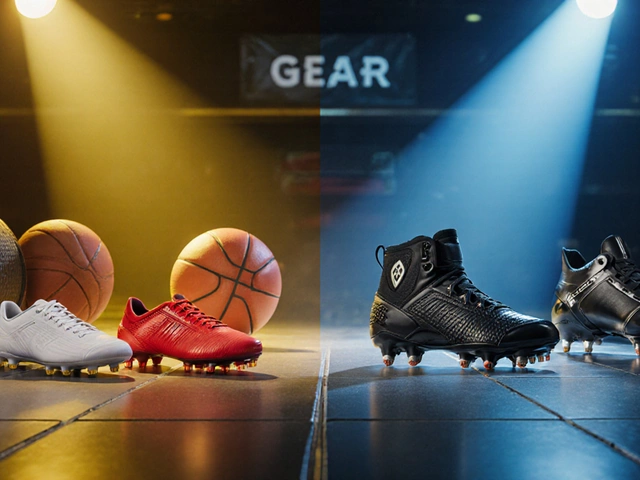Sports Gear Materials: What They Are and Why They Matter
When talking about sports gear materials, the substances used to build everything from tennis racquets to table‑tennis blades. Also known as equipment materials, these substances determine how a piece of gear feels, how long it lasts, and how well it helps you play.
Another core concept is sports equipment, the range of tools athletes use in any discipline. Sports equipment gear relies on the right material to meet safety standards and performance goals. Finally, material technology, the science behind developing new alloys, composites and polymers drives the evolution of every bat, racket, shoe and paddle you see on the market today.
Key Material Types Across Different Sports
First up, wood remains a classic for table tennis blades and some baseball bats. Its natural grain offers a soft feel and great feedback, but it’s prone to warping if not properly sealed. Next, carbon fiber and graphite composites dominate high‑end tennis racquets and badminton strings because they combine light weight with exceptional stiffness, translating into faster swing speeds. Aluminum alloys are common in hockey sticks and baseball bats, offering a balance of strength and cost‑effectiveness. Finally, engineered plastics like polycarbonate and high‑impact polymers are used for protective gear—helmets, shin guards and paddles—where impact resistance and shatter‑proof qualities are essential.
Each material brings a set of attributes: weight, stiffness, vibration dampening and durability. For instance, carbon fiber’s high stiffness improves power transfer but can feel harsh on the hands, so manufacturers add vibration‑absorbing layers. Similarly, wood’s natural vibration can enhance feel, yet it may break under high stress, leading to hybrid designs that sandwich wood with composite layers for the best of both worlds.
When you pick gear, consider the sport’s specific demands. Sports specific equipment, items designed for a particular activity, like a table‑tennis paddle or a cycling helmet often requires a tailored material mix. A paddle for fast table tennis needs a thin, stiff blade—usually carbon‑fiber‑reinforced wood—to give speed, while a paddle for defensive play might favor a slightly thicker, softer wood for control. In cycling, carbon fiber frames dominate racing for their lightweight advantage, whereas mountain bikes often blend aluminum and carbon for durability on rough terrain.
Durability is another crucial factor. Material fatigue, UV exposure and moisture can degrade performance over time. Polyurethane coatings on wooden blades protect against moisture, while UV‑resistant paints on composite racquets prevent cracking. Knowing the durability, how long a material can withstand use and environment of each material helps you plan maintenance and replacement cycles, saving money in the long run.
Performance isn’t just about raw strength. Ergonomics, grip, and feel are heavily influenced by surface textures and material blends. Many manufacturers embed rubberized grip pads into handles, using silicone or thermoplastic elastomers, to reduce slippage when sweaty. This synergy between grip material and core structure shows how material technology advances in polymers and composites directly boosts athlete confidence and control.
Environmental impact is gaining attention too. Recyclable aluminum, bio‑based resins, and reclaimed wood are entering the market as greener alternatives. When you choose gear made from such materials, you support a sustainable loop that reduces waste without sacrificing performance. This trend also pushes material researchers to develop stronger, lighter biocomposites that match traditional carbon fiber’s specs.
Overall, understanding sports gear materials gives you a clear edge: you can match material traits to your playing style, anticipate wear, and make smarter purchasing decisions. Below you’ll find a curated list of articles that break down specific gear choices, material science basics, and practical tips for extending the life of your equipment. Dive in to see how each material choice can change the way you play and train.
Ever wondered what those trusty sports shoes or protective helmets are really made of? Dive into the world of sports gear materials, uncovering the unique combinations and cutting-edge technologies that make our athletic equipment effective and safe. From synthetic fibers to high-tech polymers, discover what goes into the gear we rely on every day. Learn about advancements in material technology and how they impact performance and safety in various sports.
READ MORE





